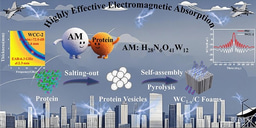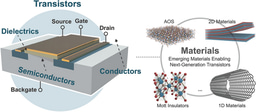MXene‑Based Wearable Contact Lenses: Integrating Smart Technology into Vision Care
Published in Bioengineering & Biotechnology and Materials

As wearable health technologies evolve, smart contact lenses (SCLs) are emerging as powerful platforms for non-invasive, real-time ocular diagnostics. Now, researchers from Istanbul Okan University and Istinye University, led by Prof. Ali Zarrabi and Dr. Siavash Iravani, have presented a comprehensive review on MXene-based smart contact lenses, highlighting their transformative potential in vision care and ophthalmic health monitoring. This work outlines how MXenes—2D transition metal carbides—can revolutionize contact lens functionality through biosensing, therapy, and user comfort.
Why MXene-Based Contact Lenses Matter
- Multifunctionality: Enable real-time monitoring of intraocular pressure (IOP), glucose, and inflammation, while offering photothermal therapy and antimicrobial protection.
- High Performance: Transparent MXene films provide excellent electrical conductivity, mechanical flexibility, and biocompatibility.
- Therapeutic Potential: Support drug delivery, anti-inflammatory action, and even electromagnetic shielding for eye protection.
Innovative Design and Features
- Material Integration: MXenes like Ti3C2Tx are embedded into lens substrates for strain sensing, photothermal conversion, and optical transparency.
- Self-Powered Sensing: MXene-based micro-supercapacitors and piezoresistive sensors enable continuous, battery-free IOP monitoring.
- Smart Therapeutics: MXene coatings reduce inflammation, prevent bacterial adhesion, and enhance post-surgical healing in intraocular lenses (IOLs).
Applications and Future Outlook
- Clinical Monitoring: Demonstrated 0.014 mmHg-1sensitivity in IOP sensors and 33.21 mV mmHg-1 in crack-enhanced MXene–CNT lenses.
- Real-Time Feedback: Integrated with wireless modules and AI for smartphone-based health alerts and personalized diagnostics.
- Challenges and Opportunities: Key hurdles include long-term biostability, scalable synthesis, and maintaining optical clarity. Future efforts will focus on fluorine-free MXene production, surface functionalization, and clinical validation.
This review establishes MXene-based smart contact lenses as a promising frontier in digital ophthalmic healthcare, offering a convergence of biosensing, therapy, and comfort in a single wearable platform.
Follow the Topic
-
Nano-Micro Letters

Nano-Micro Letters is a peer-reviewed, international, interdisciplinary and open-access journal that focus on science, experiments, engineering, technologies and applications of nano- or microscale structure and system in physics, chemistry, biology, material science, and pharmacy.






Please sign in or register for FREE
If you are a registered user on Research Communities by Springer Nature, please sign in